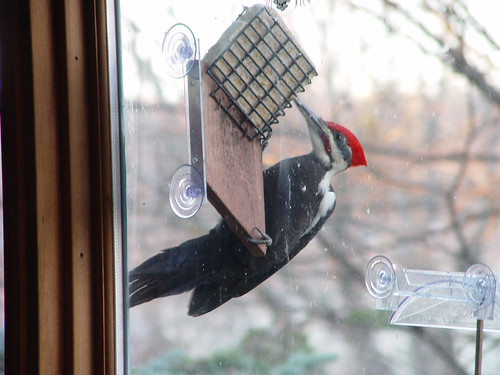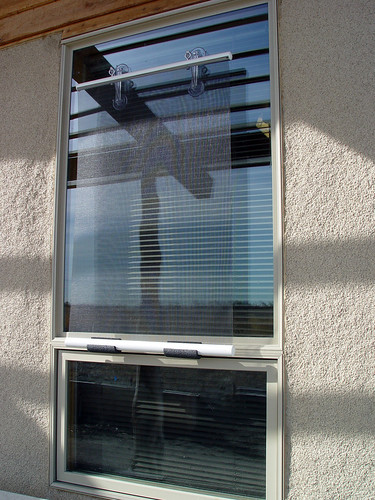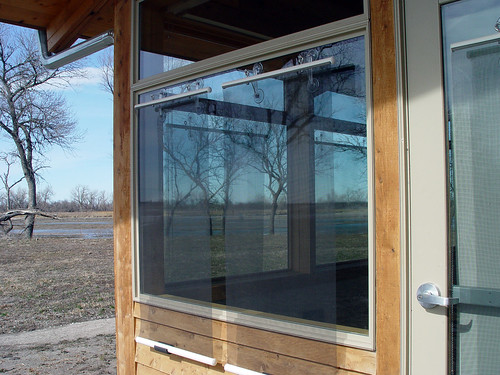Feeder placement doesn’t make a bit of difference in the
case of Ovenbirds and other insectivores that just happen to be in our yards.
To protect all birds, one approach is to break up reflections in the glass using
closely spaced decals or special tape on the outside of the glass. The American Bird Conservancy sells a special tape designed specifically for this purpose.
Another approach is to get screening or netting on the outside of the window,
as taut as a trampoline and set 3 or more inches from the glass.
Some effective bird-friendly windows:
Here's some window screening on a Rowe Sanctuary window, designed by The Bird Screen Company:
The huge window overlooking the bird-feeding station at the Cornell Lab of Ornithology is bird-safe thanks to the taut netting covering the window.
The window glass is on the inside of the framing, and the netting on the outside, far enough from the glass to work like a trampoline if birds do hit.
These windows at the Quarry Hill Nature Center in Rochester, Minnesota, are angled downward. Birds at the nearby feeding station see ground, not sky or trees, reflected, so don't fly toward the glass.
The EPA lab in Duluth, where my husband works, was a constant source of avian mortality during migration until people working there started covering the windows with netting in spring and fall. This has worked effectively for many years.
The view from inside is still quite nice.
Some birds do start noticing glass when they can spend time near it. Watch this young Evening Grosbeak figure it out. It could still easily collide with glass, just as people do when a glass door isn't properly marked, but not one of the Evening Grosbeaks visiting this window feeder collided with my windows.
This Black-capped Chickadee knows to tap on the window to catch my attention if s/he wants a mealworm.



